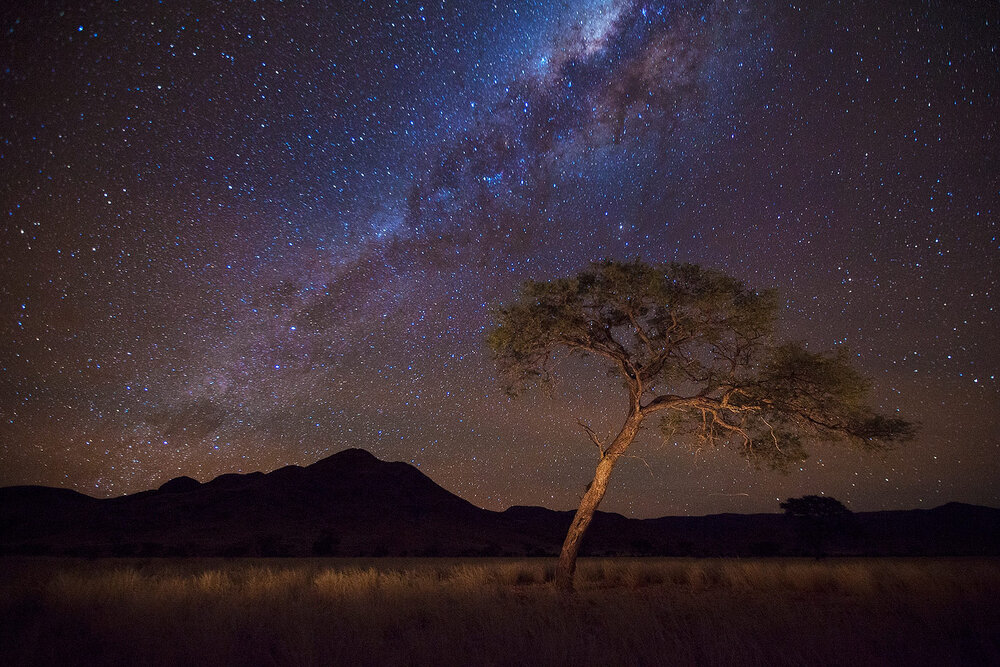Under African Skies

In the major metropolises where many of us dwell, the primordial beauty of the stars is shut out by light from skyscrapers, stadiums, and advertisements. Luckily, much of Africa remains the world's most pristine wilderness, making it the perfect place to rediscover and experience firsthand the amazing power of the night sky. Here are some of Epic Road's favorite African locations to do just that.
Morocco: Zagora & M'hamid, Dunes of Erg Chigaga
Travelers to the Dunes of Erg Chigaga report a sky more thickly laced with stars than any they’ve ever seen. The dunes, southwest of Marrakesh, are located sixty miles from the nearest trafficked road. This is true desert. Enjoy a delicious tajine dinner on a moonlit sand dune and then absorb the awesome power of the fiery sky.
Namibia: Namib Desert
In this nearly lunar landscape, one of the world’s oldest, it makes sense that the universe should feel so close and almost palpable. The low and flat desert horizon frames and accentuates the dome of earth’s atmosphere. According to NASA, Namibia boasts one of the planet's darkest night skies, creating a spectacular showcase for shooting stars, constellations, and the Milky Way.
Serengeti: Lamai Wedge
Sleeping beneath the enormous, glittering Lamai sky is a singular experience. The stars seem almost to descend and kiss the ground. Lay back and search for Scorpio, Cygnus the Swan, and Taurus. You may even be joined by star-gazing companions, like hyenas, wildebeest, and elephants.
Malawi: Likoma Island, Lake Malawi
Lake Malawi is a truly magical spot to view the celestial landscape. At night, fishermen use lanterns on their canoes, dotting the lake like stars in the night sky. Above, the stars twinkle like diamonds in velvet, creating a 360-degree sparkling panorama.
Mozambique: Quilalea Island
Where better to star-gaze than from the isolation of a private island? At Quilalea, only the gentle sound of the surf can interrupt what may be one of the most romantic, stellar nights of your life. The pink and blue cloud of the Milky Way is visible overhead almost every night.
Botswana: Duba Plains, Okavango Delta The Southern Hemisphere offers a completely different view of the universe than the Northern. On a clear winter’s night (June-September), with a strong telescope, there’s a possibility of glimpsing Mars, Jupiter with its four Galilean moons, and the ever-stunning ringed Saturn.






